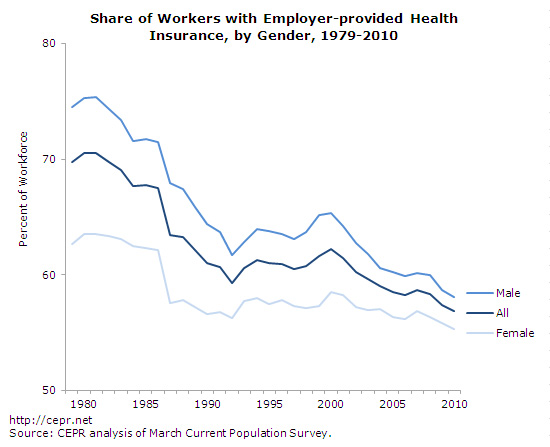August 01, 2012
For a CEPR report released yesterday, John Schmitt and I calculated the share of US workers that have employer-provided health insurance (where the employer pays at least part of the premium).
As the graph below shows, since 1979, the share of workers with coverage has fallen 12.9 percentage points, to just 56.8 percent by 2010 (the most recent data available). The decline in coverage has been much more drastic for men than for women. Of course, this is nothing for women to feel good about; in part, this is just because we women had a shorter distance to fall. In 1979, 62.6 percent of female workers had coverage and by 2010 that number had decreased 7.3 percentage points to 55.3 percent. For men, the share with coverage fell 16.4 percentage points, from 74.5 percent in 1979 to 58.1 percent in 2010.
Since the CPS does not measure the quality of employer-sponsored health-insurance coverage, these numbers understate the deterioration in coverage. In 1979, copays, deductibles, annual, and lifetime limits, for example, were rare.
Our new report puts these changes in health-care coverage in the context of a broader deterioration in “good jobs.” We define a good job based on three simple criteria: an earnings threshold at about $18.50 an hour, an employer-sponsored retirement plan, and employer-provided health insurance. Despite enormous increases over the last three decades in the productive capacity of the U.S. economy, we find that the share of good jobs has actually declined. One of the most important contributors to this decline was the fall in employer-provided health insurance.







